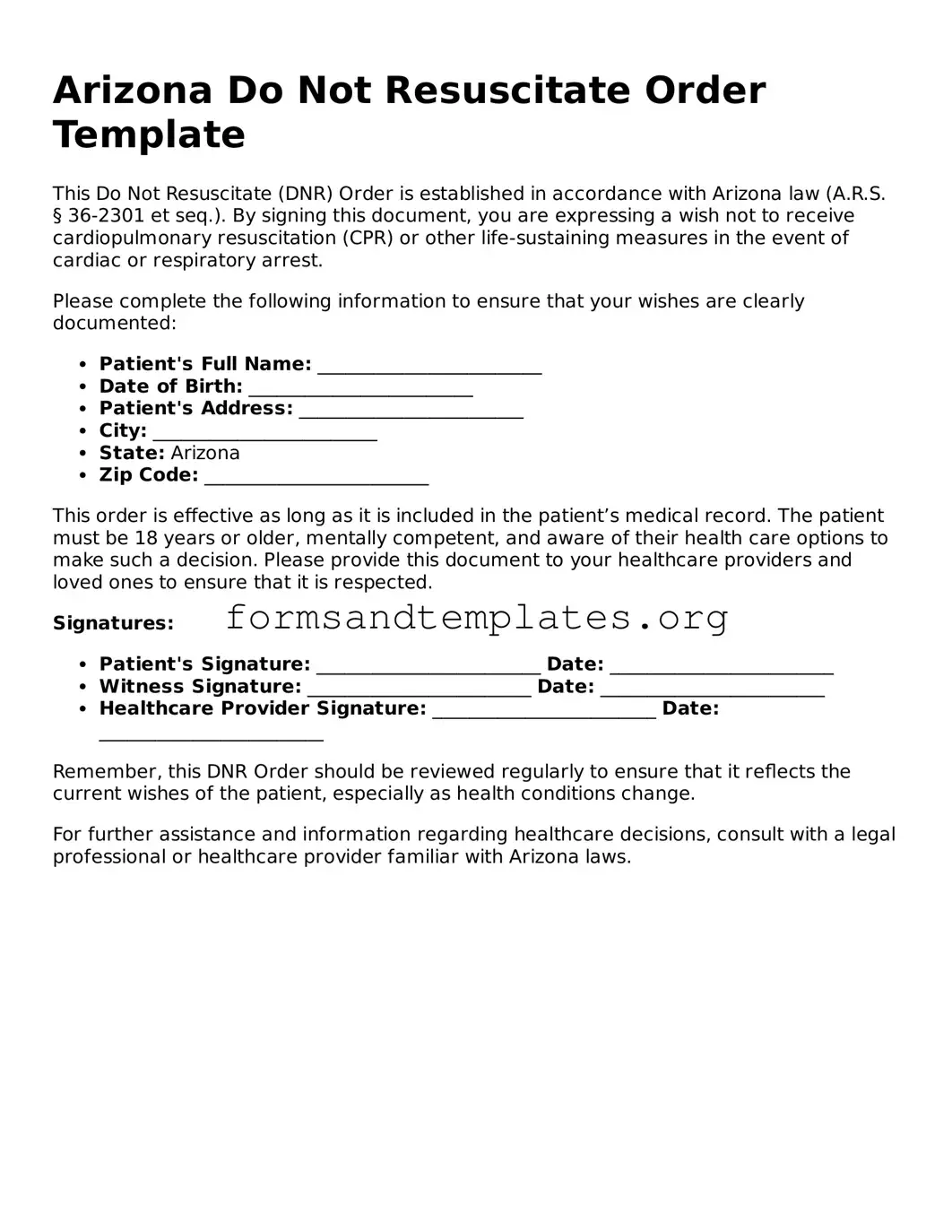Arizona Do Not Resuscitate Order Template
This Do Not Resuscitate (DNR) Order is established in accordance with Arizona law (A.R.S. § 36-2301 et seq.). By signing this document, you are expressing a wish not to receive cardiopulmonary resuscitation (CPR) or other life-sustaining measures in the event of cardiac or respiratory arrest.
Please complete the following information to ensure that your wishes are clearly documented:
- Patient's Full Name: ________________________
- Date of Birth: ________________________
- Patient's Address: ________________________
- City: ________________________
- State: Arizona
- Zip Code: ________________________
This order is effective as long as it is included in the patient’s medical record. The patient must be 18 years or older, mentally competent, and aware of their health care options to make such a decision. Please provide this document to your healthcare providers and loved ones to ensure that it is respected.
Signatures:
- Patient's Signature: ________________________ Date: ________________________
- Witness Signature: ________________________ Date: ________________________
- Healthcare Provider Signature: ________________________ Date: ________________________
Remember, this DNR Order should be reviewed regularly to ensure that it reflects the current wishes of the patient, especially as health conditions change.
For further assistance and information regarding healthcare decisions, consult with a legal professional or healthcare provider familiar with Arizona laws.
